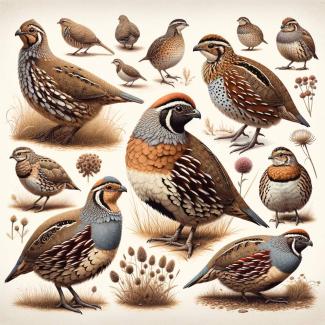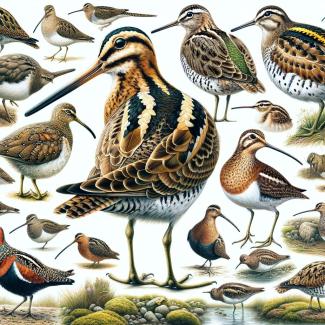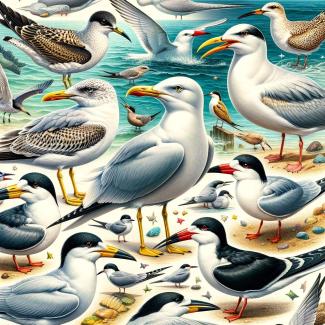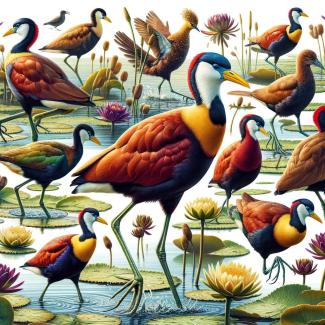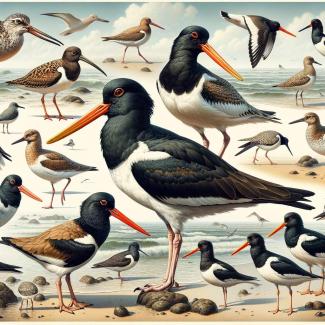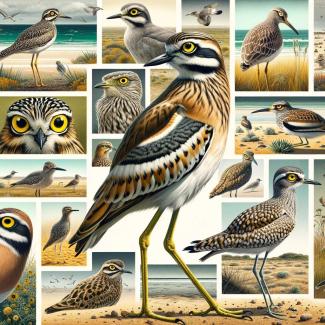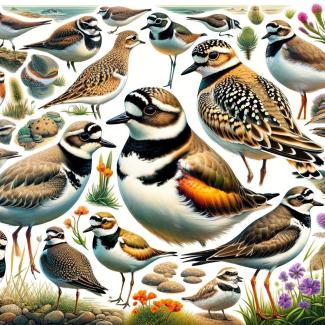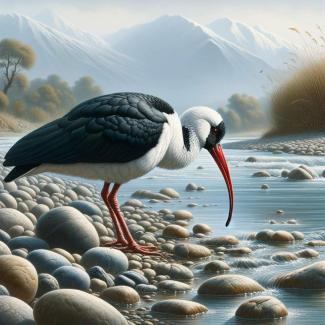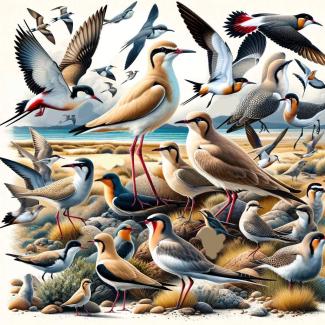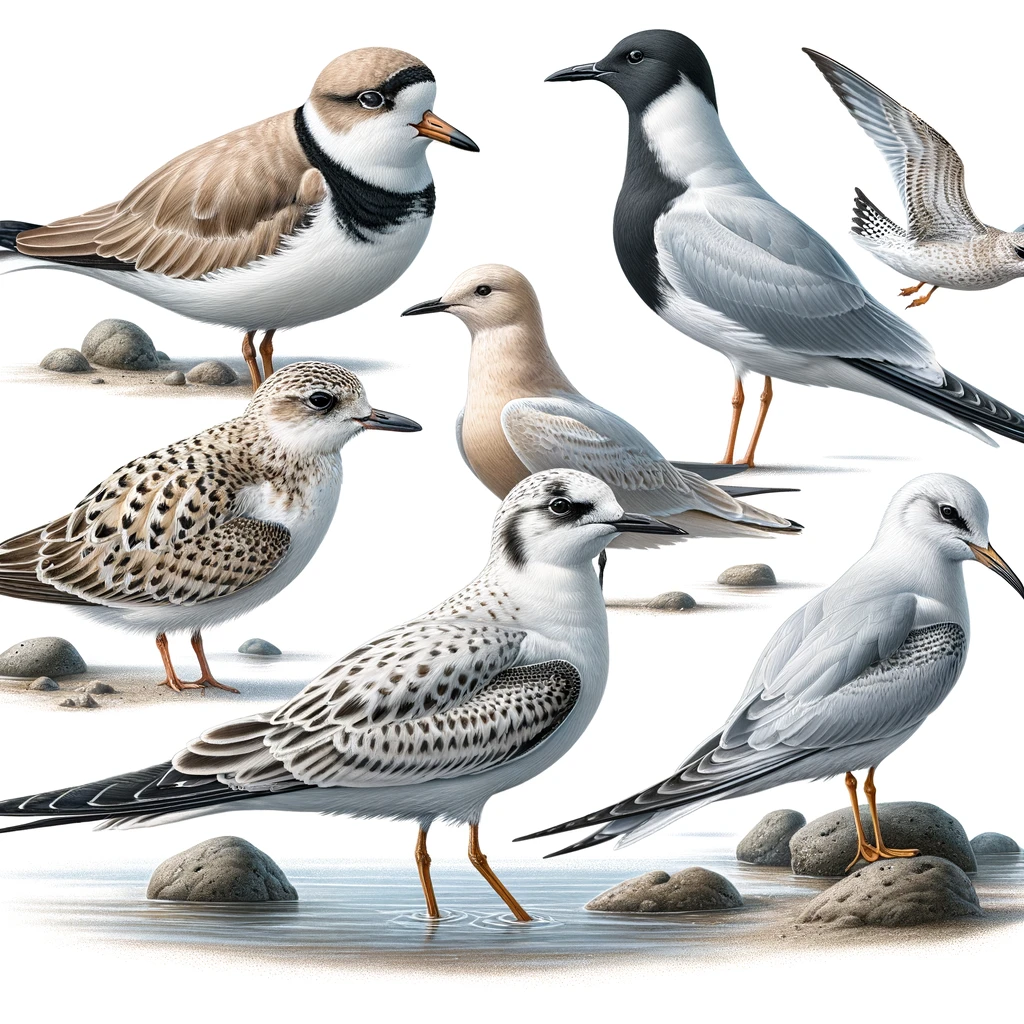
Encompassing a diverse assemblage of shorebirds, gulls, terns, auks, plovers, and more, Charadriiformes is a distinct order of small- to medium-sized water birds, many of which demonstrate remarkable long-distance migratory behaviors. With over 350 extant species divided into 18 families, Charadriiformes possesses a global distribution across all continents.
While varying considerably in specifics of appearance and habitat preferences, core shared traits unite Charadriiformes. These include waterproof plumage, elongated distal leg segments, and sensory adaptations aiding the location of aquatic prey along beaches and tide flats.
Though some lineages like the gulls expanded more generalized aerial and terrestrial hunting behaviors, ancestral shore-wading ecology retains strong representation today.
The early evolutionary origins of ancestral Charadiiformes trace back to the late Cretaceous period over 75 million years ago. From this ancient waterbird stock, successive adaptive radiations spawned today's impressive lineages specialized towards the landscapes ranging from the high Arctic to temperate coasts to barren deserts and grasslands.
Yet periodically vast flocks still concentrate along remote shorelines during epic migrations - hearkening back to the tidal flats where their ancient forbearers first stretched their wings.
Characteristics
Physical Features
Charadriiformes span a spectrum of shapes and sizes with varied ecological roles. Diminutive proportions characterize sandpipers while thick-necked gulls stand among the heaviest. Wading specialists show elongated legs and necks. Strong bills facilitate probing sediments or capturing fish. Webbed toes assist swimming species. Dense plumage resists water penetration among divers. Camouflage patterns blend most members against shoreline backgrounds.
Many display brightly colored legs, bills, eyes, or ear patches only visible at close distances - likely assisting parent-hatchling recognition and social interactions. Seasonal plumage changes also assist courtship signaling for breeding pairs.
Behavioral Traits
Food sources range from underwater invertebrates captured by feel, to small fish, aquatic plants, and opportunistic scavenging. Vision fine-tuned to movement facilitates the detection of both mobile prey and threats.
Gregarious birds congregating in huge flocks, some Charadriiformes migrate astonishing distances up to 26,000 kilometers roundtrip from the Arctic and subarctic breeding zones to more temperate wintering regions. Others maintain more localized ranges or seasonal altitudinal shifts.
Reproduction and Lifespan
Ground nesting predominates, with bare scrapes host to speckled olive or brown eggs relying upon natural camouflage to survive amidst rocky coasts and tundra. Precocial downy chicks demonstrate early mobility. Short-fledging periods facilitate seasonal productivity timed with ephemeral food bounties. Average longevity typically spans less than five years but large gulls may persist over 20 years.
Some Extant families
Charadriidae (plovers)
Globally widespread, the 64 species of plovers occupy open environments like grasslands and mudflats on every continent except Antarctica. Medium proportions and compact shape facilitate terrestrial mobility. Strong legs and bills suit them for probing soft sediments for invertebrates. Some also consume plant material. Distinct black and white plumage patterns distinguish breeding adults.
Scolopacidae (sandpipers)
The nearly 90 species of sandpipers demonstrate peak diversity along coastal regions worldwide. Long legs and necks alongside slender frames support tactile hunting for buried prey while minimizing weight on muddy terrain. Multi-directional flexible joints in their elongated bills enhance sensation capacities used to detect buried bivalves, worms, or crustaceans.
Laridae (gulls)
The over 50 species of true gulls typify the family with thicker bodies, shorter necks, and heavier bills suited to omnivorous scavenging or predation. While generalized, larids retain aquatic ties - whether patrolling shorelines or rivers inland. Social behavior concentrates hundreds of individuals across cold water regions when not dispersed more widely.
While varied across families, shared ancestral waterbird ecology persists through numerous common name groups - uniting divers, oystercatchers, avocets, stilts, and more specialized snipe and phalaropes that all continue exploiting coastal interface niches.
Global Distribution and Habitat
Owing to the extensive variety contained across nearly 20 families, Charadriiformes maintains nearly ubiquitous global distribution - occupying every continent including most remote subantarctic and Arctic regions frequented seasonally by migrating species. Penguins represent the sole absence down to Antarctica itself.
Myriad forms preferentially occupy rocky coasts, tidal zones, saline wetlands, mudflats, grasslands, and tundra biomes. Beach sand consistency suits different probing methods and prey items - from exposed rockweed habitats to more sheltered estuarine muds rich in buried bivalves. Inland lakes and rivers also attract many plovers, stilts, and avocets.
Ample sensory adaptations aid in locating food along uniform shorelines. Touch sensitivity concentrates on specialized bill tips while an upward gaze helps detect overhead threats. Some also exploit ultraviolet light wavelengths to enhance the visibility of urine tracks and other beach signposts. Metabolic adaptations sustain balancing heat retention and loss when alternating aquatic exposure.
Impressive vagility transports breeding vast flocks between the highest Arctic reaches down to Patagonian shores annually - guaranteeing temporarily abundant resources for migratory young before the next journey unfolds. By adapting towards diverse intertidal niches globally, myriad Charadriiformes persist across dynamic coastal interfaces worldwide.
Ecological Importance
As abundant shoreline residents and migratory visitors, Charadriiformes significantly influence littoral community dynamics and food chains. Their constant probing and scavenging turn over beach sediments - distributing nutrients, oxygenating subsurface layers to enhance microbe productivity, and reducing fouling from washed-up decaying matter.
Gulls additionally perform waste cleanup roles along inland waterways near human habitation and garbage dumps. Shorebirds also regulate populations of burrowing shellfish, worms, and crustaceans. Migratory flocks transport marine nutrients between breeding and wintering grounds - benefiting plants inland.
Healthy intertidal zones support nurseries for juvenile fish and other marine life to develop before heading seaward. By sustaining a balanced ecological structure, shorebirds thus enhance fishery outputs valued by human communities in coastal regions as well. Their presence also indicates suitability for other sensitive species like sea turtles relying on intact beach habitats for nesting.
Furthermore, epic migrations concentrating millions of individuals also focus substantial predation pressures - delivering an important seasonal prey bonanza for waiting for peregrine falcons, eagles, foxes, and other predators that exploit temporary abundance along migrant stopover sites. Thereby both year-round residents and visitors uphold diverse food webs.
Charadriiformes in Nepal
Although lacking extensive coastline, Nepal’s inland wetlands and grasslands support impressive terrestrial wader diversity during winter migrations or Himalayan breeding seasons. Nearly 50 species reside seasonally - spanning plovers like the endangered Siberian lapwing to diminutive sandpipers.
Lowland lakes and flooded rice paddies attract dabbling ducks and stilts. Higher altitude wetlands host avocets and sandplovers. Alpine rock ptarmigan and Himalayan snowcock also spend summer exploiting high passes. Gulls frequent major rivers and towns, while diminutive pratincoles grace Nepali skies during journeys farther afield.
While many species' wintering grounds remain abundant, some localized upland nesters face threats from development, overgrazing and climate shifts shrinking glacial sources for wetlands. Groups like Bird Conservation Nepal (BCN) promote surveys, education, and site protection - including guarding black-necked crane nests.
Beyond tourism value beckoning birders worldwide, abundant wading birds enrich village rice harvests by regulating crop pests. Charadriiformes also occasionally appears symbolically in Nepali art and folklore - evoking resilience towards harsh mountain extremes during winter months before warmer lowlands beckon their return. Suitably managed, diverse migratory assemblages should endure across this crossroads.
Conservation Challenges and Efforts
Owing to threats facing limited nesting habitats and migratory stopover sites, over 100 Charadriiformes species now rank as near threatened, vulnerable, or endangered per IUCN Red List assessments - including almost a quarter of sandpipers. Intertidal wetlands have declined over 70% in parts of Europe and North America over the past century.
Coastal development for human infrastructure consumes critical shoreline habitats - directly eliminating foraging and nesting zones beneath hotels or indirectly shifting sandy ecosystems through dredging activities and marine structures. Pollution also amasses in ocean-edge sediments where shorebirds probe - leading to rapid avian uptake of heavy metals, pesticides, and other health hazards.
Climate shifts raise sea levels, increase storm severity, and disturb breeding timing - all jeopardizing reproductive success. Patrolling raptors also exploit flock migrations. International conventions like the Ramsar Wetlands Accord promote habitat protections from industrial encroachment along flyways crossing continents to sustain intact ranges.
While considerable work remains, targeted programs have scored victories in restoring estuarine wetlands, guarding arctic nests against foxes, legislating hunting restrictions, developing oil spill response capacity, and raising conservation tied to ecotourism income potential generated from spectacular migratory phenomena around the world.
Conclusion
The expansive Charadriiformes order encapsulates immense species variety distributed across nearly all global shores and wetlands thanks to retained ancestral aquatic adaptability refined over 75 million years. While differing dramatically in size, shape, and habits, they collectively uphold stability throughout dynamic coastal interfaces prone to change.
As abundant residents, migrants, and seasonal visitors, Charadriiformes, directly and indirectly, support entire localized ecosystems - sustaining sheltering sediments, circulating nutrients, controlling prey species populations, and concentrating energy subsidies for inland predators. Thereby these unassuming waders, divers, probers, scavengers, and more maintain balance across the trophic levels relying upon their continued presence.
Moving forward, escalating anthropogenic habitat pressures from development, pollution, and climate instability jeopardize sustaining intact ranges and migratory timing. Only through persistent conservation initiatives prioritizing the protection of ubiquitous stopover networks can we secure the continuity of their incredible marathons linking opposite poles of the planet.
In Nepal, stewarding precious high-altitude breeding wetlands and grasslands promises to maintain vibrant summer Charadriiformes activity amidst Himalayan alpine passes. While also upholding essential waterfowl habitat to shelter and nourish southbound passage of winter migrants pausing to rest and feed before completing their extraordinary seasonal journeys across continents and climates in between.

